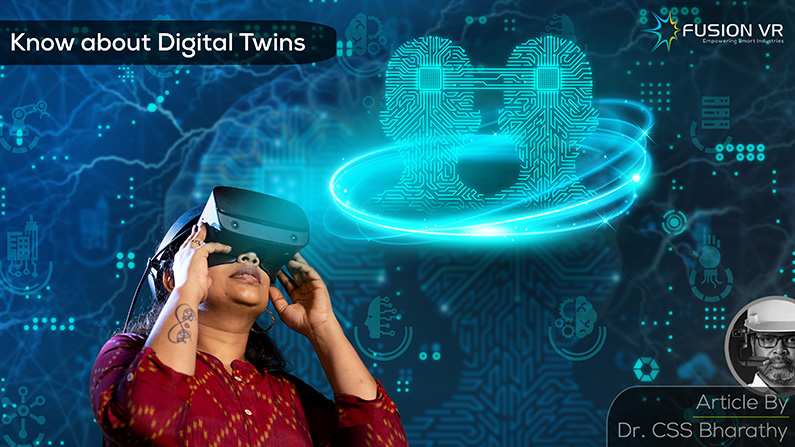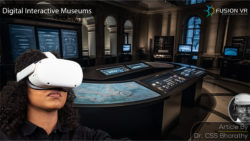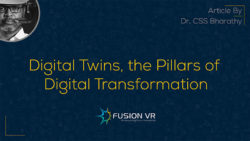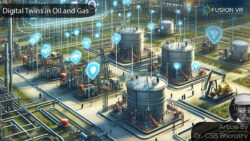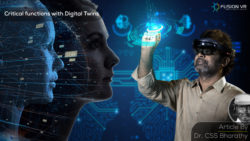There is considerable curiosity surrounding this topic among the smart engineers, and it’s a good thing! The Digital Twin is a simple concept that is quite easy to understand by everyone. A fully functional digital alternate of an existing physical equipment, process or entity is called a Digital Twin.
The definition is quite broad as it could represent machinery, a process system or even an entire plant or refinery. The digital twin will represent in its entirety the physical, functional and derivative aspects of its physical, real life counterpart. The digital twin is an embodiment of the concept of bridging two kinds of assets, the physical and the digital, using a multitude of sensors and the Industrial Internet of Things technology. This helps deliver a true digital model that is built and driven on the basis of data. The digital twin is one of the key Industry 4.0 technologies that is ushering in the Fourth Industrial Revolution.
While the world is beginning to embrace the concept of digital twins, there is still a long way to go. While existing physical assets will have digital twins created, there will be challenges to exploit the full benefits of such digital entities. The stage is ready for the design and creation of digital and physical twins from conception or the design phase itself, where the digital twin completely represents and interfaces with its physical twin. With many exciting possibilities in store, it is important that manufacturing professionals understand the types, characteristics and benefits of digital twins before developing plans for its adoption.
Are Digital Twins useful?
The digital twin presents a complete digital alter-ego of the physical asset and helps to better understand, improve and predict its behavior by the effective capture and analysis or data through machine learning and artificial intelligence. A digital twin can communicate with other similar entities, physical and digital and enable the formation of an intelligent network or an ecosystem that is capable of improving the efficiency and lifecycle of the asset in question. Such a network and the intelligence derived helps provide the capability to simulate and conduct predictive analyses. This is extremely useful for asset managers, owners and operators of manufacturing facilities worldwide. The benefits of the digital twin will reflect in the reduction of asset downtime, improved efficiencies and reduced operational and inventory costs. The reliability and operational efficiency will also result in exceeding customer expectations. Decision making will be more effective in critical situations and the intelligence generated will help make better risk based decisions.
What are various types of Digital Twins and their uses?
Currently, we can broadly classify digital twins into four types. This is based on the desired functionality expected. The four type are as follows:
- Basic Twins
- Operational Twins
- Intelligent Twins
- Immersive Twins
Basic Digital Twin
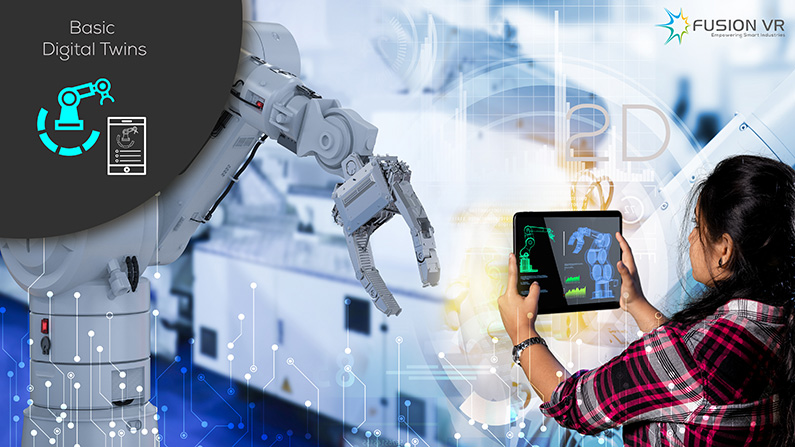
A Basic Twin is represented on a digitally created 2D drawing or dashboard that captures all the available sensor data from its physical counterpart. The digital representation is available from conventional engineering drawing such as Process Flow Diagrams (PFD), Piping & Instrumentation Drawing (P&ID), General Arrangement (GA) drawings etc.
The basic twin is connected through IIoT and provides the ability to continually monitor the performance of the physical asset or systems. The dashboard is designed to display critical operating data, KPIs, alerts, trends and alarms of the physical twin. In this scenario, the flow of data is only one way and the experience provided by a basic twin is limited to the monitoring of its physical twin. Such basic twins can be developed to specification laid out by the client by experienced solution providers.
Operational Digital Twin
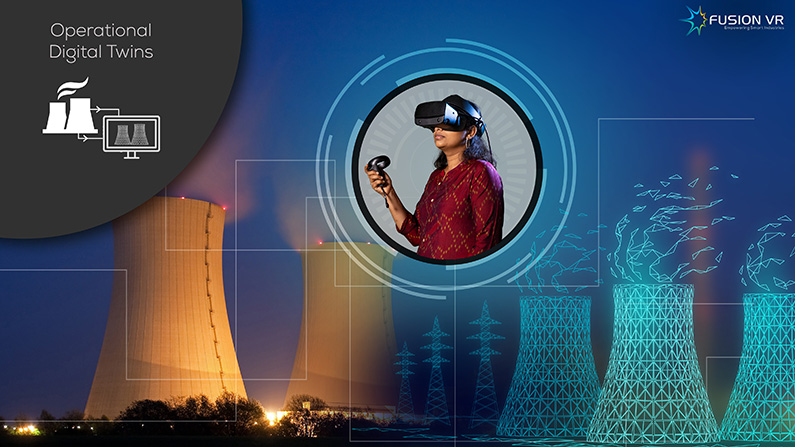
An Operational Twin represents is more advanced than a basic twin. It is a 3D engineering scale model of the physical asset. These models are digital CAD (Computer Aided Design) drawings which is highly realistic version based on accurate engineering drawings of the asset. This kind of twin provides the experience of a virtual model of the physical asset and the data that is continuously transmitted through IIoT.
This twin also delivers the ability to control the physical asset and perform actions from a remote location. This is a significant capability that does come with certain risks. The data that is transmitted in both directions require a high level if security to ensure that safe and reliable operations of the asset do not get compromised at any time. The operational twin enables the data to be analyzed and helps achieve the optimized performance of the physical operational twin. Engineers and operations staff in charge of the physical twin can reduce the intensity and frequency of their monitoring and focus their energy on other operational and strategic priorities.
Intelligent Twin
An Intelligent Twin is one that requires the use of Artificial Intelligence (AI), Machine Learning (ML) and high quality data analysis. The ability to measure and obtain necessary data which is then analyzed to deliver intelligence that is actionable forms the basis of intelligent systems. The intelligent twin represents both the static and dynamic features of the physical asset.
Intelligent Digital twins will deliver the ability to provide insight and strategies that will enhance the operations, maintenance, safety and overall reliability of physical assets, while at same time reduce costs and improve the bottom line. The intelligent twin delivers this through a dashboard that is configured to showcase critical parameters and KPIs for the technical, operational and leadership teams. This is a very valuable digital asset for organizations that are increasingly focused on reliability and safety performance at the facilities. Nascent issues and high consequence events can be predicted ahead of time using these intelligent twins and enable teams to evaluate multiple options and decide on a course of action that is in the best interests of the organization.
Immersive Twin
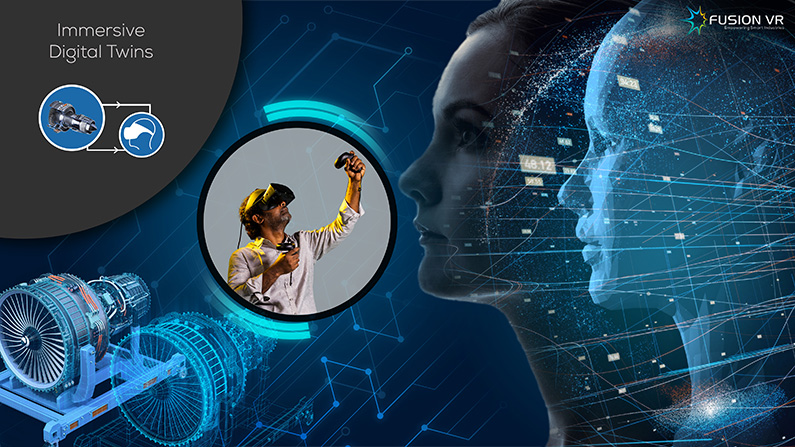
The last type of digital twin we have here is the Immersive Twin. This amazing version represents the digital twin as a wholly virtual reality asset. This three dimensional scale model of the physical twin in the VR environment represents the physical, functional aspects of the real world twin. These 3D models are very realistic in appearance with appropriate lighting, texture and physics simulations. Such realism maximizes the immersive experience provided by VR/AR/MR environments and optimized to deliver a real time rendering rich in photorealism. These models are fully integrated with the physical sensors and data from the physical twin thanks to the connectivity due to IIoT. The connectivity enables two way data transfer enabling both real time monitoring with the digital twin and interventions necessary from the immersive twin to enhance the performance of the physical asset or system.
A major advantage that immersive digital twins provide is a first person spatial experience with a 360 degree field of view that simulate a telepresence that is quite similar to a real world experience. It enables a user to feel natural experience in the virtual space, interacting with the real world asset and manage it effectively.
Another significant benefit is that the immersive digital twin helps in developing workforce competence and expertise. It enables employees to ride a steep learning curve and achieve dramatic skills development in a very short duration. A well-known PWC study supports that saying VR training is four times faster and focused than conventional training approaches.
Immersive digital twins deliver multiple benefits and improve asset performance across all industries. This and the other types of digital twins have the ability to transform the way we operate plants and factories. Ensure greater connectivity, digitalization and analytics will help make current and future industries move towards smart manufacturing.
The Future…
The types and benefits of the digital twins described above are bound to accelerate the rate of adoption. Corporate leaders are increasingly savvy about digitalization and the benefits it delivers. Digital Twin companies and their expertise is also growing to help organizations in this effort. In addition, there is a growing number of Industry 4.0 solution providers in India who provide advisory and implementation support to the manufacturing industry. The day when we begin to see digital twins and a supporting digital ecosystem along with its physical counterparts being created and implemented simultaneously is really not far off.
Dr. CSS Bharathy, Founder, Fusion VR, India is a Certified Industry 4.0 Expert with nearly three decades of experience in this industry. He has authored many publications and addressed key industry conferences.

